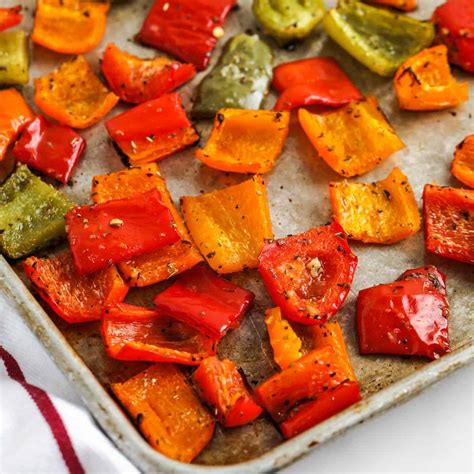Discover the diverse flavors of Tanzanian cuisine with traditional dishes, staple foods, unique ingredients, authentic preparation techniques, and popular desserts.
Tanzanian Staple Foods
Contents
Tanzanian staple foods are an important part of the country’s rich culinary traditions. The staple foods of Tanzania consist of a variety of grains, vegetables, and fruits that are the foundation of many traditional dishes. Ugali is a popular staple in Tanzania, made from maize flour and water, and is often served as a side dish with meat, fish, or vegetables. Another staple food is pilau rice, a fragrant rice dish cooked with spices and often served with meat or vegetables. In addition, ndizi nyama, a traditional dish made with plantains and meat, is also a staple in Tanzanian cuisine.
One of the main staple foods in Tanzania is maize, which is used to make a variety of dishes such as ugali, maize porridge, and maize bread. Additionally, beans are also a staple food in Tanzania and are often used in dishes such as beans and rice, bean stew, and bean soups. These staple foods are not only delicious but also provide important nutrients and energy for the people of Tanzania.
Traditional Tanzanian staple foods often reflect the country’s agricultural practices and the unique ingredients that are grown and produced in the region. Both rice and maize are widely grown in Tanzania and play a key role in the country’s staple food production. The use of these staple ingredients in Tanzanian cuisine is a reflection of the agricultural heritage of the country and the importance of these crops in sustaining the local population.
In addition to grains and cereals, fruits and vegetables are also important staple foods in Tanzania. Fruits such as mangoes, bananas, and pineapples are widely available and are often used in desserts, juices, and as snacks. Vegetables such as spinach, sweet potatoes, and okra are also commonly used in traditional Tanzanian dishes, providing essential vitamins and minerals to the diet.
Overall, Tanzanian staple foods are an integral part of the country’s diverse and flavorful cuisine. From maize and rice to beans and plantains, these staple ingredients are the building blocks of many traditional dishes and are a key part of everyday life in Tanzania.
Exploring Traditional Tanzanian Dishes
Tanzanian cuisine is a reflection of the country’s diverse culture and rich history. One of the best ways to get to know a culture is through its traditional dishes, and Tanzania offers a unique and flavorful culinary experience.
When exploring traditional Tanzanian dishes, you can expect to encounter a variety of staple foods that are central to the country’s cuisine. These staple foods include Ugali, which is a cornmeal porridge, and Wali, which is a rice pilaf. These dishes are often served with meat, fish, or vegetable stews, making for a hearty and satisfying meal.
Additionally, Tanzanian cuisine features a wide range of unique ingredients that contribute to the distinct flavors of the dishes. From coconut milk and plantains to cassava and yams, these ingredients add depth and complexity to Tanzanian cuisine.
Another interesting aspect of traditional Tanzanian dishes is the authentic preparation techniques that are employed. Many dishes are cooked slowly over an open flame or in a clay pot, allowing the flavors to meld and intensify. This slow cooking method results in tender and flavorful dishes that are a delight to the senses.
Finally, no exploration of Tanzanian cuisine would be complete without delving into the popular desserts of the country. From sweet, sticky rice cakes to fried plantains drizzled with honey, Tanzanian desserts are a delicious end to a traditional meal.
Unique Ingredients in Tanzanian Cuisine
When it comes to Tanzanian cuisine, there are a number of unique ingredients that are used to create the delicious and flavorful dishes that are enjoyed by locals and visitors alike. One of the most commonly used ingredients in Tanzanian cooking is coconut milk. This rich and creamy liquid is used in many traditional Tanzanian recipes, adding a subtle sweetness and depth of flavor to dishes such as curries and stews.
Another essential ingredient in Tanzanian cuisine is plantains. These starchy fruits are cooked and eaten in a variety of ways, from being boiled and mashed to being fried and served as a side dish. Plantains add a unique texture and flavor to many Tanzanian dishes, and are a staple in the country’s culinary tradition.
One of the more unusual ingredients that is often used in Tanzanian cuisine is cassava. This root vegetable is high in carbohydrates and is often used as a thickening agent in soups and stews. It is also used to make a popular Tanzanian dish called ugali, which is a type of porridge made from cassava flour and water. Cassava adds a unique and earthy flavor to many Tanzanian dishes.
Finally, a commonly used ingredient in Tanzanian cuisine is cardamom. This fragrant spice is often used to add a warm and aromatic flavor to both savory and sweet dishes. Cardamom is used in everything from meat marinades to baked goods, and is an essential part of Tanzanian cooking.
Authentic Tanzanian Preparation Techniques
When it comes to Tanzanian cuisine, the preparation techniques are as important as the ingredients used. Authentic Tanzanian preparation techniques often involve slow cooking and a variety of spices to create rich, flavorful dishes.
One common technique used in Tanzanian cooking is marinating meats and seafood with a blend of spices such as turmeric, cumin, and coriander. This allows the flavors to penetrate the protein and creates a depth of flavor in the final dish.
Another important technique in Tanzanian cuisine is the use of coconut milk in cooking. Whether it’s in savory dishes like curries or in sweet treats like coconut rice pudding, the addition of coconut milk imparts a unique creaminess and flavor to Tanzanian dishes.
Traditional Tanzanian stews, such as mchuzi wa samaki (fish stew) or mchuzi wa nyama (beef stew), are often cooked slowly over low heat to allow the flavors to meld together. This slow cooking technique results in tender, flavorful meats and a rich, thick sauce.
In addition to slow cooking, grilling over an open flame is also a popular preparation technique in Tanzania. Whether it’s nyama choma (grilled meat) or mishkaki (grilled skewers), grilling imparts a smoky flavor and charred edges that add depth to the dish.
Popular Tanzanian Desserts
When it comes to Tanzanian cuisine, the desserts are just as vibrant and flavorful as the main dishes. These desserts are often a reflection of the rich cultural heritage and the use of local ingredients that are available in Tanzania. From sweet treats to fruity delights, Tanzanian desserts offer a unique and delightful experience that is worth exploring.
One of the most popular Tanzanian desserts is Mahamri, which are sweet, coconut-flavored doughnuts. They are often served as a snack or dessert and are widely enjoyed across the country. Mahamri are usually served with a dip or on their own, and their delicious flavor and fluffy texture make them a favorite among locals and visitors alike.
Another beloved Tanzanian dessert is Mbaazi za Nazi, which are pigeon peas cooked in coconut milk and sweetened with sugar. This creamy and comforting dessert is often served warm and is a staple during special occasions and festive celebrations in Tanzania.
Kashata is a delightful Tanzanian sweet treat made from grated coconut, sugar, and sometimes flavored with cardamom or vanilla. It is often shaped into small squares or rectangles and is a popular dessert that is enjoyed by both children and adults in Tanzania.
Mkate wa Ufuta is a traditional Tanzanian dessert that consists of sesame seed bread. This dessert is known for its nutty flavor and chewy texture, making it a unique and popular choice for those with a sweet tooth in Tanzania.











